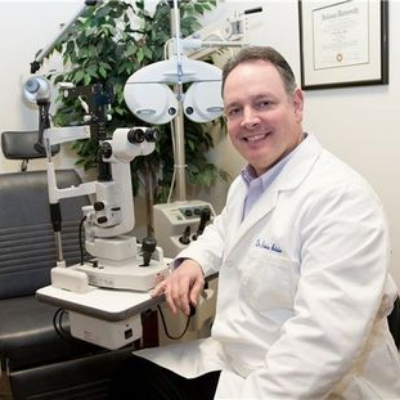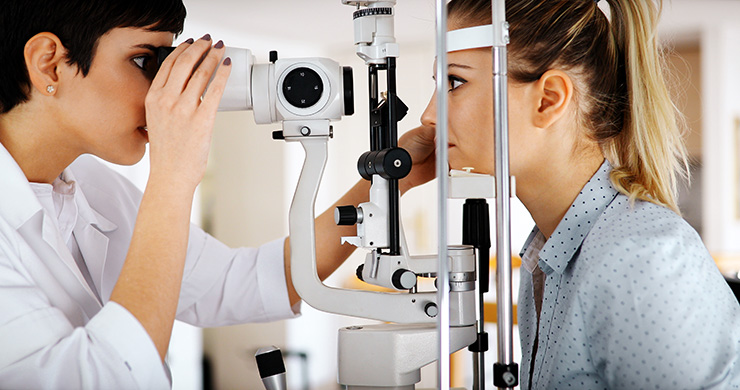The Relevance of Regular Check-Ups with an Eye Doctor Optometrist
Wiki Article
Exploring the most up to date Technological Innovations in Optometry and What They Mean for Optometrists
From the precision of Optical Comprehensibility Tomography to the nuanced understandings provided by AI-driven analysis tools, these developments are establishing new requirements in individual analysis and treatment. As these advancements penetrate the technique, eye doctors are encountered with the challenge of accepting these devices to enhance client outcomes.Innovations in Diagnostic Equipment
Progressing the field of optometry, advancements in analysis devices have actually transformed the method eye treatment professionals evaluate and diagnose ocular conditions and aesthetic disabilities. The previous decade has actually experienced substantial technical innovations, making it possible for even more accurate and comprehensive analyses. Optical Comprehensibility Tomography (OCT), for instance, provides high-resolution cross-sectional pictures of the retina, permitting the early discovery of illness such as glaucoma and age-related macular degeneration. This non-invasive imaging strategy has ended up being essential in modern optometric practice.Another secret advancement is the introduction of innovative corneal topography systems, which map the surface curvature of the cornea with precision. These devices are particularly helpful for fitting call lenses and identifying corneal conditions. Electronic retinal imaging has transformed conventional ophthalmoscopy, providing in-depth, scenic views of the retina that help with detailed visual assessments.
The advancement of wavefront aberrometry has actually likewise been vital, allowing the evaluation of refractive errors with unrivaled precision (Eye Doctor Optometrist). This technology aids in tailoring restorative lenses and enhancing surgical end results for refractive surgeries. Jointly, these analysis improvements equip eye doctors to provide exceptional patient treatment, guaranteeing very early intervention and customized therapy methods, eventually enhancing visual health results
AI in Individual Management
Building on the foundation of advanced analysis devices, the consolidation of fabricated intelligence (AI) in person administration represents a transformative leap for optometry. AI systems are significantly used to enhance performance, accuracy, and customization in individual treatment.In addition, AI-driven platforms facilitate structured patient interactions and management processes. Automated organizing, online appointments, and personalized follow-up plans not only boost person complete satisfaction however additionally maximize time monitoring for professionals. These systems can triage people based on the seriousness of their conditions, making certain that those in crucial requirement get punctual interest.
Furthermore, AI enhances decision-making by providing optometrists with evidence-based recommendations and treatment paths. By integrating information from electronic health records, AI tools use understandings that inform professional choices, reducing the risk of errors and enhancing individual end results. As AI remains to evolve, its duty in person monitoring will likely expand, improving the landscape of optometric care.
Developments in Retinal Imaging
In the world of optometry, retinal imaging has seen amazing technical developments that are boosting diagnostic capabilities and client treatment. Developments such as Optical Comprehensibility Tomography (OCT) and fundus photography have actually changed how eye doctors evaluate the retina and imagine. OCT, specifically, gives high-resolution, cross-sectional photos of the retina, enabling the comprehensive examination of its layers. This capability is important for early discovery and administration of problems like glaucoma, diabetic person retinopathy, and age-related macular deterioration.Enhanced imaging modalities like OCT angiography are additional refining diagnostic precision. Eye Doctor. Such advancements promote the identification of minute retinal adjustments that could indicate illness development.
Moreover, improvements in fabricated intelligence are increasing retinal imaging by enabling computerized evaluation of big datasets. These systems aid eye doctors in recognizing patterns a sign of pathology, therefore improving analysis precision and performance. Collectively, these technologies are transforming retinal imaging right into a cornerstone of modern-day eye treatment, boosting results and broadening therapeutic opportunities.
Teleoptometry's Growing Role
Teleoptometry is increasingly ending up being a crucial part of eye treatment, driven by improvements in electronic communication and analysis devices. This is particularly beneficial in underserved and rural areas where access to specialized eye treatment is often minimal.The assimilation of fabricated intelligence (AI) additional improves teleoptometry, allowing the analysis of aesthetic information and aiding in the discovery of eye conditions such as glaucoma and diabetic person retinopathy. AI-powered formulas can quickly translate complicated imaging data, giving optometrists with beneficial understandings that boost professional decision-making.
In addition, teleoptometry sustains connection of care with seamless combination with electronic wellness documents (EHRs), enabling eye doctors to preserve extensive patient backgrounds. When seeking advice from with different specialists., this ensures that people obtain personalized and consistent care even.
In spite of these advantages, challenges remain, consisting of guaranteeing data safety and handling patient expectations. Teleoptometry represents a substantial stride in the direction of even more available, reliable, and patient-centered eye treatment. As innovation develops, its duty is positioned to broaden further.

Future Fads in Eye Treatment
A myriad of cutting-edge fads is readied to reshape the future of eye care, driven by technical innovations and the advancing needs of individuals. One significant pattern is the assimilation of fabricated intelligence (AI) in diagnostics, which guarantees to boost the precision and efficiency of eye examinations. AI formulas can assess substantial amounts of data from retinal photos, potentially spotting problems like diabetic retinopathy and glaucoma earlier than standard approaches.Moreover, personalized medication is getting grip in optometry, with genetic screening notifying customized treatment plans. This technique aims to maximize client results by customizing treatments to specific hereditary accounts. Wearable technology, such as clever contact lenses, is also go coming up, using real-time tracking of intraocular stress or sugar degrees, therefore offering continual insights into ocular and systemic health and wellness.
The adoption of enhanced reality (AR) and virtual fact (VR) in training and patient education is another emerging pattern. These innovations offer immersive experiences that can boost understanding and skills both for eye doctors and individuals. As these fads progress, eye doctors have to stay abreast of technological Source developments to give cutting-edge treatment, guaranteeing improved person results and fulfillment in the dynamic landscape of eye care.
Final Thought

Jointly, these diagnostic improvements equip optometrists to provide superior person care, making sure very early treatment and tailored treatment methods, ultimately improving visual health outcomes.

As these technologies continue to progress, optometrists need to adjust and include them right into technique, inevitably optimizing workflow performance and raising the standard of eye treatment supplied to individuals.
Report this wiki page